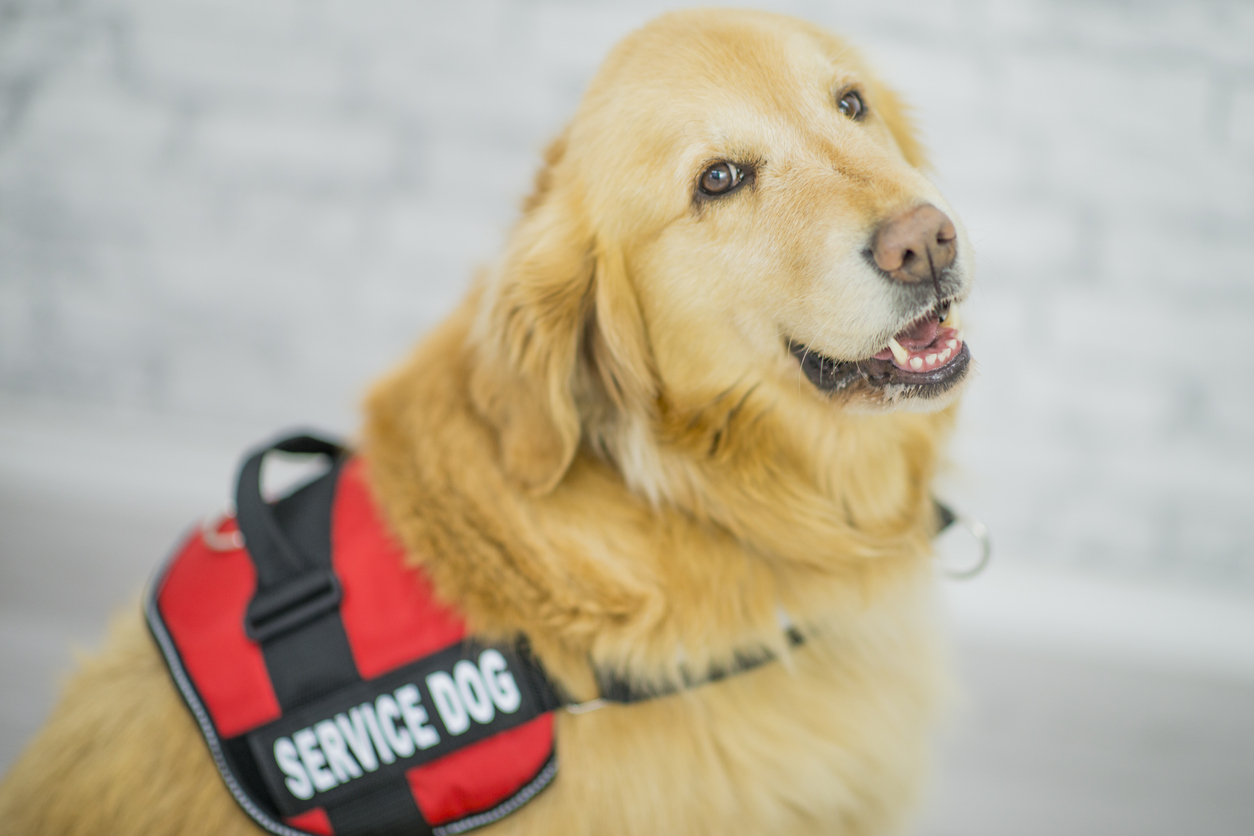Living with Chronic Pain
The Difference Between Service Animals, Emotional Support Animals, and Therapy Animals

Service animals, emotional support animals, and therapy animals serve very similar purposes, looking after the emotional or physical well-being of either their handler or a group of people. However, these three types of animals have distinct differences, especially when considering one as an accessibility tool or interacting with them.
Service animals (U.S.)
Service animals are typically dogs, although the Americans with Disabilities Act (ADA) does recognize miniature horses as an acceptable type of service animal. Other animals, such as cats, reptiles, rodents or birds, cannot be considered service animals. A service animal must be trained to perform at least one task that helps to mitigate the disability of their handler. Emotional support is not considered a reason for a service animal under the ADA. Service dogs do not have to be trained by an organization and may be trained by the handler. There are pros and cons to both, including price, involvement, and time commitment.
Service dogs have public access rights; however, there are places they cannot go. This includes food preparation or packaging areas, sterile areas of a hospital, certain areas of a zoo, or situations that would be unsafe for either the dog or others. Service dogs must be well-behaved in public and not aggressive towards humans or other animals.
A service dog is not required to have certification, registration (unless a license is required to own a dog), or paperwork, except for a letter from a medical professional due to housing or flying. Any breed of dog can be a service dog, although some are more suited for certain types of work than others. Service animals do not need to be identified by a vest, although some training agencies will require them to wear a logo vest in public spaces.
Service animals (CA)
The rights of service dog handlers in Canada are dependent upon the area. In British Columbia, registration is available on a voluntary basis. Alberta and Nova Scotia require a service dog to have certification or registration, either through an organization or evaluation process. In Alberta, service dogs may be organization-trained or handler-trained, although handler-trained dogs must be assessed to ensure certain standards of behavior and training are met. Service dogs in Alberta must also have ID cards when in public areas. Ontario requires a dog to either be easily identifiable as relating to the handler’s disability or for the handler to have documentation from a health care provider stating that they are disabled and require a service dog. Service dogs have housing rights in British Columbia, Alberta, Nova Scotia, and Saskatchewan.
Emotional support animals (U.S.)
Emotional support animals in the United States can be any type of domesticated pet, including cats, dogs, rodents, etc. They help their owner feel at ease and manage depression, anxiety, and certain phobias. Emotional support animals are different from psychiatric service animals, which are trained to perform a task related to an individual’s mental health or psychiatric condition.
Although the presence of an emotional support animal can be comforting to the owner, they are not trained to perform a task and are not required to have the right to enter the same public spaces as service animals. Certain airlines allow emotional support animals to fly with their owners, although recently, many have stopped allowing this. If allowed, the person must provide a letter from their health care provider stating the need for an emotional support animal.
Emotional support animals have the same housing rights as service animals. If a health care professional’s letter is provided, a landlord or leasing agency cannot deny a person housing or charge additional fees for these animals. They also cannot discriminate against breeds in these cases. There is no requirement for a license, certification or registration for emotional support animals, and they are not required to be identified with a vest.
Therapy animals (U.S.)
Therapy animals provide emotional comfort or assist in therapeutic activities. Many hospitals or outpatient psychiatric facilities pair with the handlers to include a therapy animal in certain activities. The handler may take their animals to nursing homes or other places that might benefit from their services. Certain areas have programs where applicable individuals can have a therapeutic experience with their animals.
Much like an emotional support animal, therapy animals can be any species of domesticated pet. Unlike emotional support animals, however, they do typically need to be registered with an animal-assisted intervention organization once they pass training, behavioral, and health evaluations. There is no requirement for identification, although they may wear a bandana, harness, or ID tag. The access of therapy animals into places where pets are not normally allowed is not protected by federal law and, therefore, typically is decided by the management of the facility.
Emotional support animals and therapy animals (CA)
Emotional support animals and therapy animals are not legally recognized in Canada and do not have the same access rights as service animals. Generally, it is up to the discretion of the business to decide whether they will permit emotional support and therapy animals.
Additional sources: ADA.gov, American Kennel Club, American Veterinary Medical Association and Assistance Dogs International


















